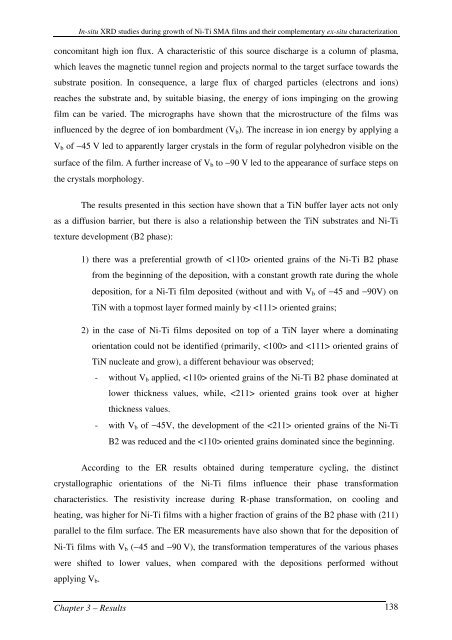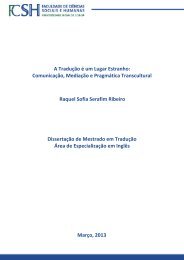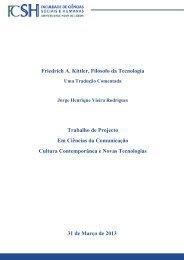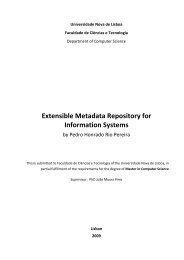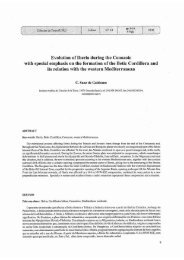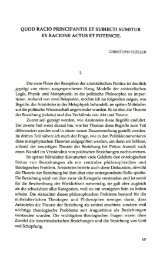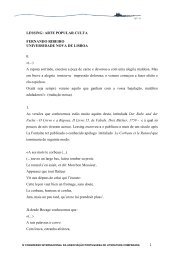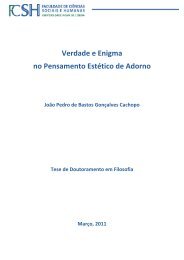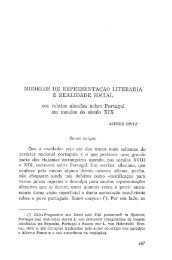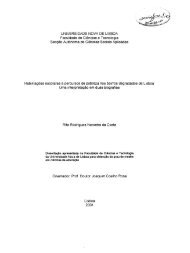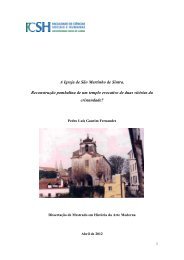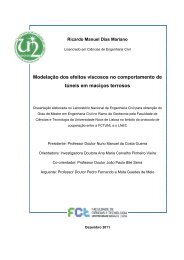PhD Thesis_RuiMSMartins.pdf - RUN UNL
PhD Thesis_RuiMSMartins.pdf - RUN UNL
PhD Thesis_RuiMSMartins.pdf - RUN UNL
Create successful ePaper yourself
Turn your PDF publications into a flip-book with our unique Google optimized e-Paper software.
In-situ XRD studies during growth of Ni-Ti SMA films and their complementary ex-situ characterization<br />
concomitant high ion flux. A characteristic of this source discharge is a column of plasma,<br />
which leaves the magnetic tunnel region and projects normal to the target surface towards the<br />
substrate position. In consequence, a large flux of charged particles (electrons and ions)<br />
reaches the substrate and, by suitable biasing, the energy of ions impinging on the growing<br />
film can be varied. The micrographs have shown that the microstructure of the films was<br />
influenced by the degree of ion bombardment (V b ). The increase in ion energy by applying a<br />
V b of −45 V led to apparently larger crystals in the form of regular polyhedron visible on the<br />
surface of the film. A further increase of V b to −90 V led to the appearance of surface steps on<br />
the crystals morphology.<br />
The results presented in this section have shown that a TiN buffer layer acts not only<br />
as a diffusion barrier, but there is also a relationship between the TiN substrates and Ni-Ti<br />
texture development (B2 phase):<br />
1) there was a preferential growth of oriented grains of the Ni-Ti B2 phase<br />
from the beginning of the deposition, with a constant growth rate during the whole<br />
deposition, for a Ni-Ti film deposited (without and with V b of −45 and −90V) on<br />
TiN with a topmost layer formed mainly by oriented grains;<br />
2) in the case of Ni-Ti films deposited on top of a TiN layer where a dominating<br />
orientation could not be identified (primarily, and oriented grains of<br />
TiN nucleate and grow), a different behaviour was observed;<br />
- without V b applied, oriented grains of the Ni-Ti B2 phase dominated at<br />
lower thickness values, while, oriented grains took over at higher<br />
thickness values.<br />
- with V b of −45V, the development of the oriented grains of the Ni-Ti<br />
B2 was reduced and the oriented grains dominated since the beginning.<br />
According to the ER results obtained during temperature cycling, the distinct<br />
crystallographic orientations of the Ni-Ti films influence their phase transformation<br />
characteristics. The resistivity increase during R-phase transformation, on cooling and<br />
heating, was higher for Ni-Ti films with a higher fraction of grains of the B2 phase with (211)<br />
parallel to the film surface. The ER measurements have also shown that for the deposition of<br />
Ni-Ti films with V b (−45 and −90 V), the transformation temperatures of the various phases<br />
were shifted to lower values, when compared with the depositions performed without<br />
applying V b .<br />
Chapter 3 – Results 138


